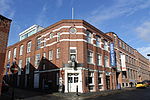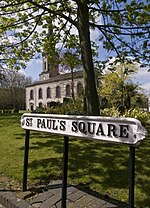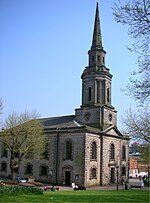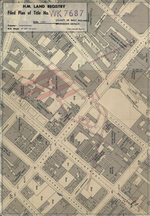Queen's Arms, Birmingham
Art Nouveau architecture in EnglandCommercial buildings completed in 1870Commercial buildings completed in 1901Grade II listed pubs in BirminghamMitchells & Butlers

The Queen's Arms (sometimes styled "The Queens Arms") is a Grade II listed public house in Birmingham, England, built c. 1870. It is noted for the tiled art nouveau signage on its exterior, which was remodelled in 1901 to the designs of the architect, Joseph D. Ward for its then owners, Mitchells & Butlers.The red brick building sits on the corner of Charlotte Street and Newhall Street, on the edge of the city's Jewellery Quarter. It was given Grade II listed status in April 2004.Scenes for the BBC serial television drama Line of Duty were filmed in the pub.
Excerpt from the Wikipedia article Queen's Arms, Birmingham (License: CC BY-SA 3.0, Authors, Images).Queen's Arms, Birmingham
Newhall Street, Birmingham Ladywood
Geographical coordinates (GPS) Address External links Nearby Places Show on map
Geographical coordinates (GPS)
| Latitude | Longitude |
|---|---|
| N 52.4836 ° | E -1.9066 ° |
Address
Queens Arms
Newhall Street 150
B3 1RY Birmingham, Ladywood
England, United Kingdom
Open on Google Maps










